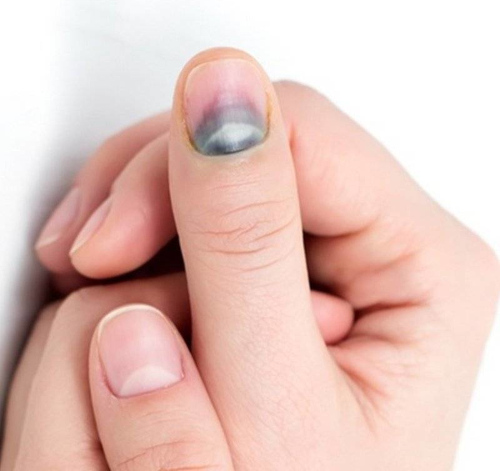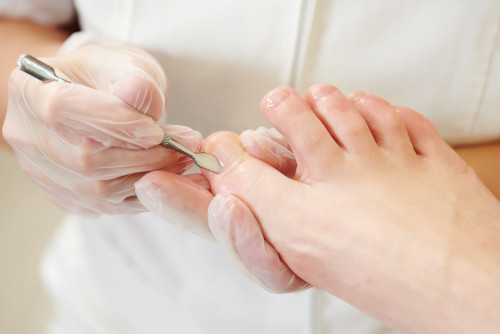Treatment of nail onycholysis
Onycholysis is a common type of onychodystrophy; it is characterized by a disruption of the connection between the plate and the bed, while the integrity of the latter is not violated. To visit a podologist at the K+31 clinic or consult with a specialist online, leave a request on this page.

specialists

equipment

treatment
Main symptoms

The first symptom of onycholysis is a change in the appearance and structure of the nail. It becomes duller and changes its natural color to white, yellow or gray, and spots appear. Gradually, the plate begins to separate from the nail bed, forming a space that is filled with air or liquid. Over time, nail peeling increases. In some cases, complete separation of the plate is observed.
Dirt constantly gets in and accumulates at the site of detachment, which is accompanied by an unaesthetic appearance of the fingers and an odor. This environment facilitates the attachment of pathogenic bacteria. Most often, nails are affected by Pseudomonas aeruginosa.
Depending on the cause of the disease, additional symptoms are observed. For example, with a fungal infection, the nail thickens. A specific coating of unusual color forms under it. With dermatological problems, itchy redness of the skin around the nail may appear.
Causes

Injury is one of the most typical causes of onycholysis in the arms and legs. You can get damaged in the background:
- Unsuccessful manicure (free edge cut incorrectly, sloppy cleaning)
- Wearing gel polish (not allowing the material to dry out, exposure to ultraviolet light on the nail plate, chemical burns from the material)
- Nail injuries (strong blow, being pinched by a door)
- Falls (toenails are more susceptible)
- Wearing tight and uncomfortable shoes
Onycholysis is closely related to onychomycosis, a lesion of the nails. The fungus causes changes in the structure of the plate. As a result, the nail begins to separate from the skin, and a void is created underneath it. Inappropriate care may also be a factor in the development of onycholysis. In women, the disease most often develops against the background of frequent manicure procedures using aggressive substances, the use of low-quality varnish or nail polish remover, and wearing tight shoes.
Psoriasis, eczema, and atopic dermatitis also often provoke onycholysis. In addition, systemic diseases such as liver cirrhosis, anemia, or diabetes can influence its appearance.
In some cases, onycholysis on the arms and legs is a sign of serious diseases, including cancer. Neoplasms located in the nail bed area cause pressure on the plate and provoke its subsequent peeling.
General information about the treatment of onycholysis
Our doctors

This award is given to clinics with the highest ratings according to user ratings, a large number of requests from this site, and in the absence of critical violations.

This award is given to clinics with the highest ratings according to user ratings. It means that the place is known, loved, and definitely worth visiting.

The ProDoctors portal collected 500 thousand reviews, compiled a rating of doctors based on them and awarded the best. We are proud that our doctors are among those awarded.
Make an appointment at a convenient time on the nearest date
Price
Other services
Plantar warts
Diabetic foot Laser nail treatmentReviews 4















About the disease
Onycholysis is a pathological condition in which the nail plate separates from the bed. This disease causes not only aesthetic inconvenience, but also physical discomfort. It also serves as a risk factor for the development of secondary infections.
Onycholysis is not an independent pathology. It is often a symptom or consequence of dermatological problems and fungal infections.
Doctors distinguish traumatic onycholysis caused by mechanical damage and pathology caused by fungal or bacterial infections.
There is also dystrophic (is a manifestation of systemic diseases) and allergic onycholysis (occurs in response to contact with an allergen).